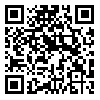BibTeX | RIS | EndNote | Medlars | ProCite | Reference Manager | RefWorks
Send citation to:
URL: http://ijeee.iust.ac.ir/article-1-9-en.html
Power transformers are key components in electrical power supplies and their failure could cause severe consequences on continuity of service and also generates substantial costs. Identifying problems at an early stage, before catastrophic failure occurs, is a great benefit for reliable operation of power transformers. Frequency Response Analysis (FRA) is a new, well-known and powerful diagnostic test technique for transformers which could find mechanical as well as electrical faults such as detection and positioning of winding short circuit, winding movement, loss of clamping pressure, aging of insulation, etc. Yet there are several practical limitations to affect the accuracy and ease using this test as a regular condition monitoring technique in the field that many of them originated from noise and measuring errors. This paper purposes a transformer automated self diagnosis system can be installed on every power supply as a part of SCADA to extract FRA graphs from transformers and offers high repeatability which is a great benefit for FRA test. This is the first time that KALMAN Filter will be use in order to eliminate narrow-band and wide-band noises from FRA graphs that ends up not only smoothed measurement but also rate of changes that is so valuable in decision making and scheduling for transformers maintenance. So we will have an intelligent system which is able to predict the future of transformer using experience of not only own self but also all the transformers in an integrated network.
Received: 2008/10/07 | Revised: 2016/12/26 | Accepted: 2016/12/26
| Rights and permissions | |
 |
This work is licensed under a Creative Commons Attribution-NonCommercial 4.0 International License. |







